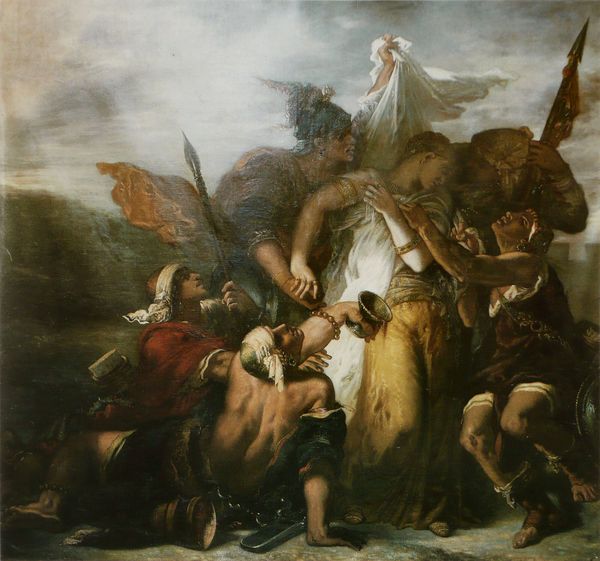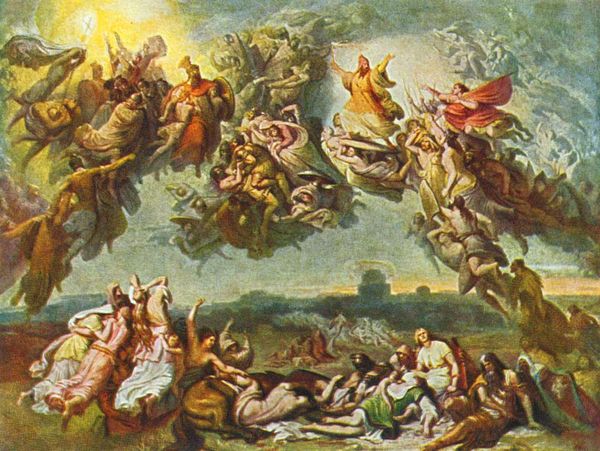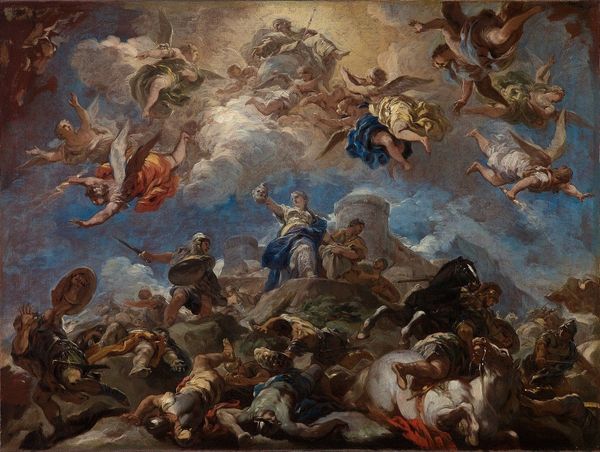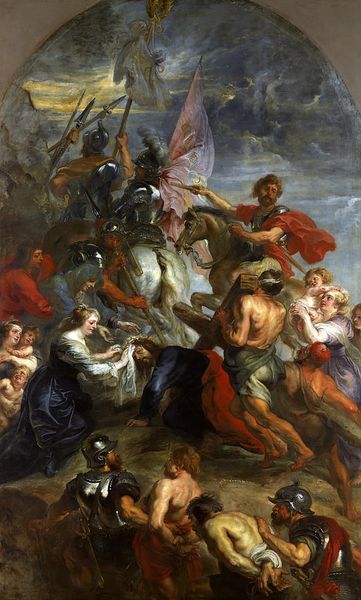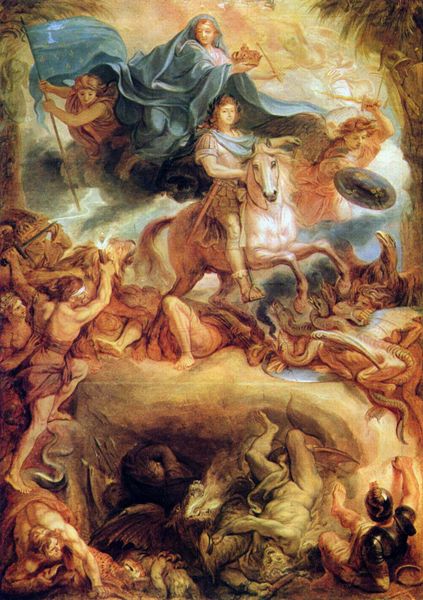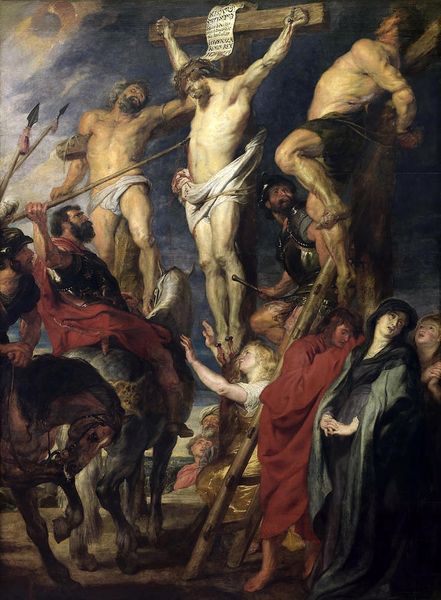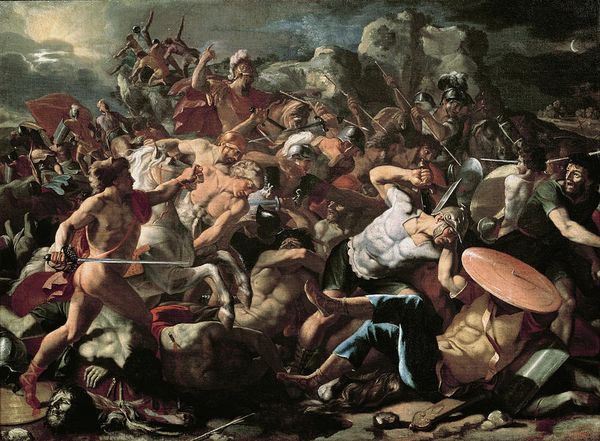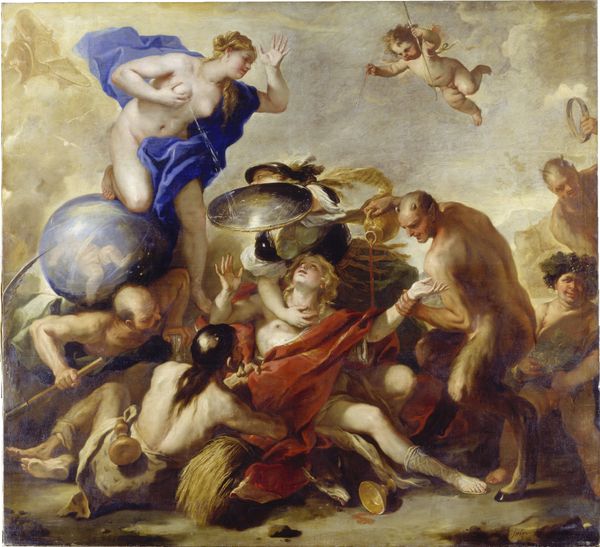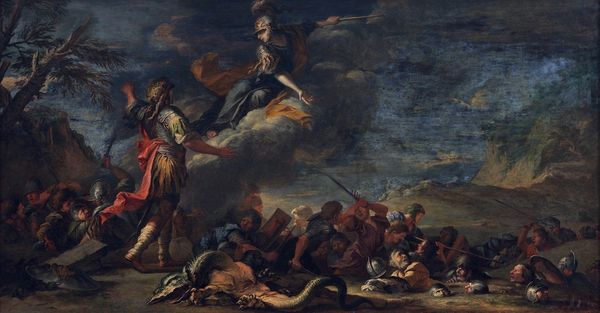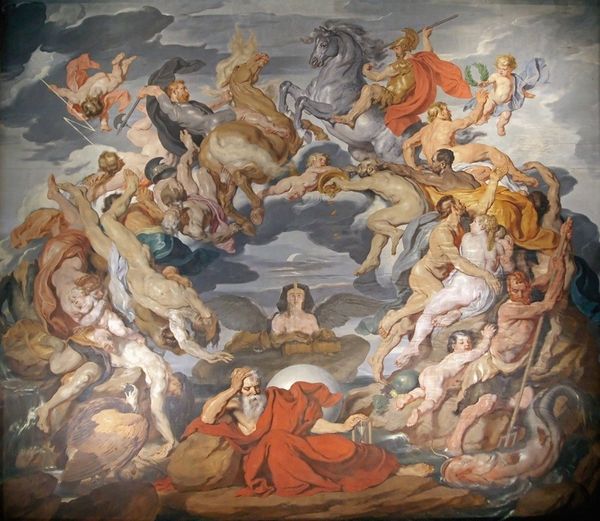
painting, oil-paint
#
narrative-art
#
baroque
#
painting
#
oil-paint
#
landscape
#
figuration
#
oil painting
#
chiaroscuro
#
flemish
#
history-painting
Copyright: Public domain
Peter Paul Rubens painted this dynamic scene of 'The Death of the Consul Decius’ in the 17th century. The scene depicts the Roman Consul Decius sacrificing himself in battle, an act meant to secure victory for his troops. Rubens creates meaning through the dramatic use of light and movement that elevates Decius's death to a heroic act. Made in the Netherlands, this painting reflects the culture's fascination with classical antiquity and the glorification of military sacrifice. Rubens’s painting may be considered an expression of conservative values, given its exaltation of hierarchy and self-sacrifice for the state. To fully appreciate Rubens's work, we can turn to historical texts and research into the cultural and political context of the 17th-century Netherlands. We can examine the ways in which artistic institutions shaped the production and reception of art at that time. By doing so, we can better understand the enduring power of art to reflect and shape the societies in which it is created.
Comments
No comments
Be the first to comment and join the conversation on the ultimate creative platform.

